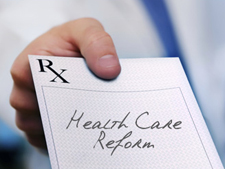New York State to Create a “Health Benefit Exchange”; 1199SEIU Welcomes the Action
April 16, 2012
On March 25, 1199SEIU President George Gresham wrote an Op-Ed article celebrating the second anniversary of the passage of the Affordable Care Act (ACA, also known as “Obamacare”). The piece, which appeared in the Albany Times-Union, urged New York State legislators to “get past their differences and create a healthcare exchange where individual consumers and small businesses can easily compare rates and shop for coverage.”
Although the legislature did not include provisions for the healthcare exchange in its 2012/13 budget, Governor Andrew Cuomo kept his promise to issue an Executive Order creating the “New York Health Benefit Exchange” in accordance with the federal ACA. The Cuomo administration says that the exchange will be instrumental in establishing the first-ever comparative marketplace to bring down the cost of health insurance.
In a written statement, 1199SEIU Political Director Kevin Finnegan said, “Governor Cuomo is right to put in place a statewide Health Exchange that will help ensure that more than one million uninsured New Yorkers will be able to obtain affordable and comprehensive health care coverage. Because of the Governor’s leadership, working families and individuals across the state will see major savings. We thank the Governor for recognizing that soaring health care costs were putting an immense strain on many middle and lower class New Yorkers, and for taking the lead in launching this Exchange.”
Since the enactment of the ACA, 2.5 million young adults under the age of 26 have been allowed to stay on their parents' health plans, protecting them from falling into debt. In New York alone, 150,428 young adults are benefiting. The law also has begun to address the harmful health care disparities facing communities of color. Minorities account for more than half the nation's uninsured, despite making up just a third of the U.S .population. These communities will now be able to get timely treatment for many preventable illnesses that disproportionately affect minority and low-income populations, e.g. diabetes, high blood pressure and stroke. It also increases funding for community health centers that serve communities that often have limited access to health care.


